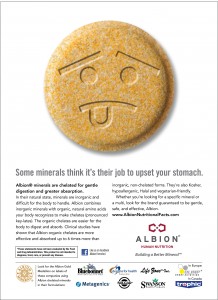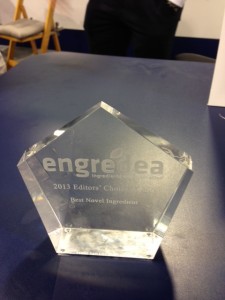
Consumer ad developed by BrandHive for Albion Minerals
1. The primary role of a consumer campaign is to increase awareness
When a B2B company markets to consumers, the role of a campaign is to increase awareness, not to close the deal. Campaigns can increase consumer awareness of a finished or ingredient brand by using visuals and messages that:
- Surprise
- Evoke positive emotions
- Create comfort with the brand
- Lead thinking to a desired conclusion
- Form associations that make the brand memorable
- Satisfy the critical filter of resistance with clinical research
- Facilitate engagement and familiarity
Please note, these same elements are also effective when marketing to manufacturers. High dollar sales are not spontaneous decisions, and manufacturers want to spend time getting to know a brand through its advertising in much the same way consumers do.
2. Marketing to consumers requires vertical strategies
Unless you want to spend a lot of money to reach consumers through horizontal channels, consider targeting vertical media channels even for consumers.
When marketing ingredients to consumers, brands used to formulate their messages and broadcast them through mass media in order to generate broad exposure. Unfortunately, the proliferation of brand messages has become so overwhelming that consumers have evolved highly effective strategies for tuning them out. As a result, B2B brands today need to use targeted vertical media channels and aim to convert a specific type of customer defined both demographically and psychographically.
Vertical channels attract consumers interested enough in health topics to become educated on ingredients and condition-specific solutions. When these customers are educated on the advantages of a particular product, they are converted into brand “advocates.”
Once converted, brand advocates share brand images and messages across their social platforms, which is how vertical messages spread “virally” into the horizontal exposure brand managers want.
3. Once you engage consumers, they want a say
What’s the hidden cost for targeting consumers in your marketing? Control of the brand. Today, brand advocates want to engage with the brands they champion. They want to have a say in future offerings and line extensions. They want to be heard on branded websites and blogs. When planning to target consumers, plan early to manage their “feedback loops.”
Campaigns that integrate these 3 points can generate the kind of consumer awareness that a brands retail partners will love.



